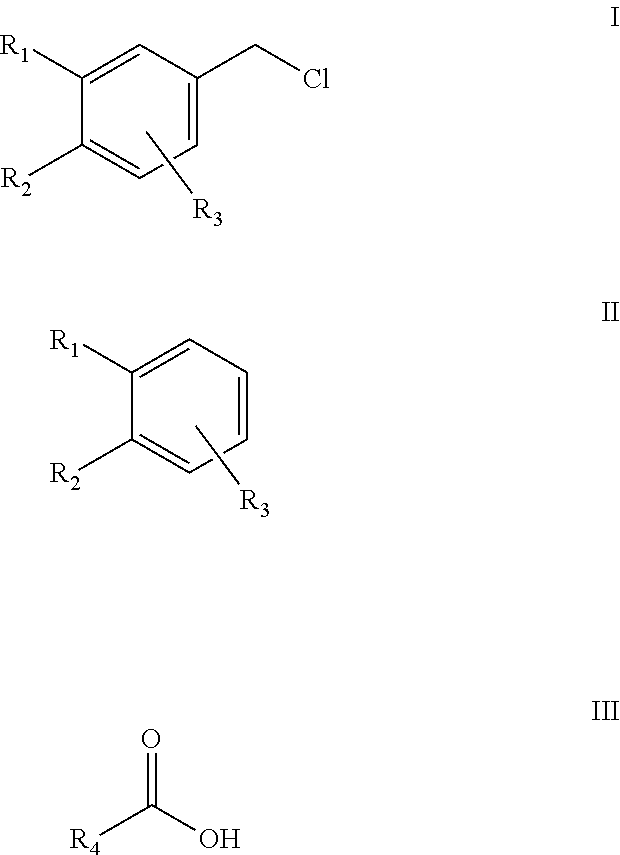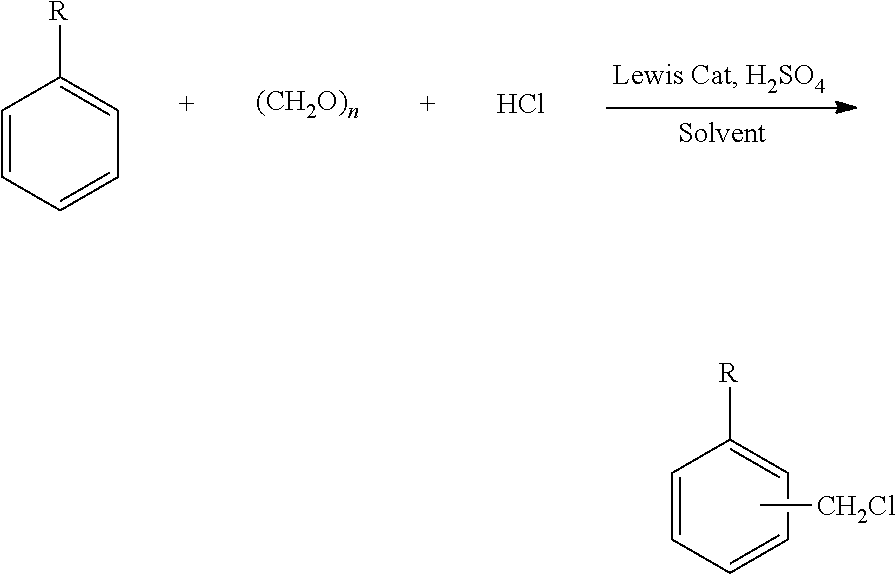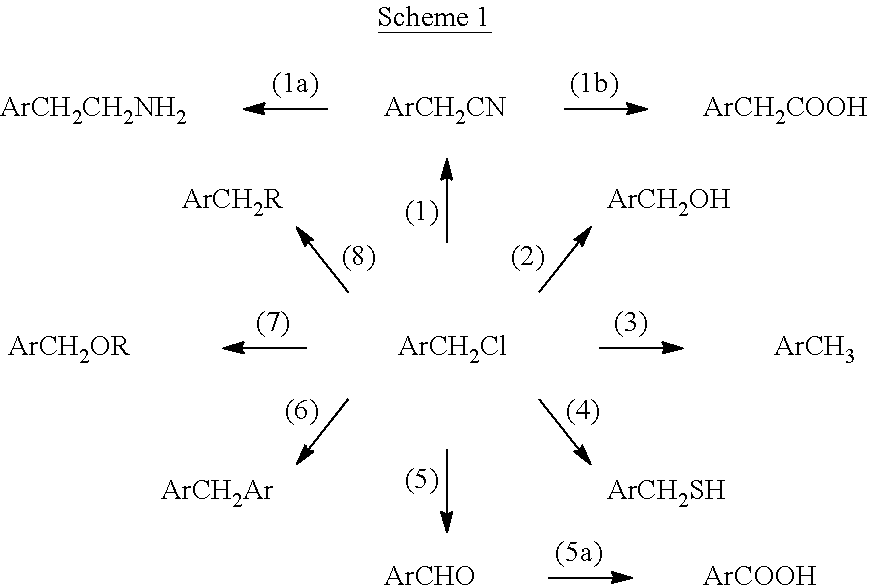An efficient and environment friendly process for chloromethylation of substituted benzenes
a chloromethylation and substitute technology, applied in the field of organic synthesis, can solve the problems of large effluent generation, long reaction time, and high temperature, and achieve the effects of high yield, environmental friendly and commercially viable, and efficient reaction tim
- Summary
- Abstract
- Description
- Claims
- Application Information
AI Technical Summary
Benefits of technology
Problems solved by technology
Method used
Image
Examples
examples
[0086]The present disclosure is further explained in the form of following examples. However, it is to be understood that the foregoing examples are merely illustrative and are not to be taken as limitations upon the scope of the invention. Various changes and modifications to the disclosed embodiments will be apparent to those skilled in the art. Such changes and modifications may be made without departing from the scope of the invention.
example-1
on of 5-(Chloromethyl)-1,3-benzodioxole
[0087]Toluene (122 g) and Paraformaldehyde (30 g) were charged into a 500 ml reaction flask and the mixture was heated to about 40° C. under stirring and maintained at this temperature under stirring with simultaneous passing of hydrogen chloride gas for about 1 hour, until a clear solution was obtained. The reaction mass was then cooled to about 0° C. and Acetic acid (3.0 g) and Methylene dioxybenzene (122 g) were charged into the reactor under stirring. The reaction mass was then maintained at between 0° C. and 5° C. for 12 hours under stirring with continuous addition of hydrogen chloride gas. The hydrogen chloride addition was stopped and the reaction mass was purged with nitrogen gas for one hour. The reaction mass was washed with water, and the organic layer obtained contained 5-(Chloromethyl)-1,3-benzodioxole ˜75.9% and unreacted Methylene dioxybenzene ˜19.2% and impurity formation ˜5% by GC (excluding solvent).
example-2
on of 5-(Chloromethyl)-1,3-benzodioxole
[0088]Toluene (122 g) and Paraformaldehyde (30 g) were charged into a 500 ml reaction flask and the mixture was heated to about 40° C. under stirring and maintained at this temperature under stirring with simultaneous passing of hydrogen chloride gas for about 1 hour, until a clear solution was obtained. The reaction mass was then cooled to about 0° C. and Acetic acid (6.0 g) and Methylene dioxybenzene (122 g) were charged into the reactor under stirring. The reaction mass was then maintained at between 0° C. and 5° C. for 12 hours under stirring with continuous addition of hydrogen chloride gas. The hydrogen chloride addition was stopped and the reaction mass was purged with nitrogen gas for one hour. The reaction mass was washed with water and the organic layer obtained contained 5-(Chloromethyl)-1,3-benzodioxole ˜83.5% and unreacted Methylene dioxybenzene ˜9.9% and impurity formation ˜6% by GC (excluding solvent).
PUM
| Property | Measurement | Unit |
|---|---|---|
| pressure | aaaaa | aaaaa |
| temperature | aaaaa | aaaaa |
| time | aaaaa | aaaaa |
Abstract
Description
Claims
Application Information
 Login to View More
Login to View More - R&D
- Intellectual Property
- Life Sciences
- Materials
- Tech Scout
- Unparalleled Data Quality
- Higher Quality Content
- 60% Fewer Hallucinations
Browse by: Latest US Patents, China's latest patents, Technical Efficacy Thesaurus, Application Domain, Technology Topic, Popular Technical Reports.
© 2025 PatSnap. All rights reserved.Legal|Privacy policy|Modern Slavery Act Transparency Statement|Sitemap|About US| Contact US: help@patsnap.com



